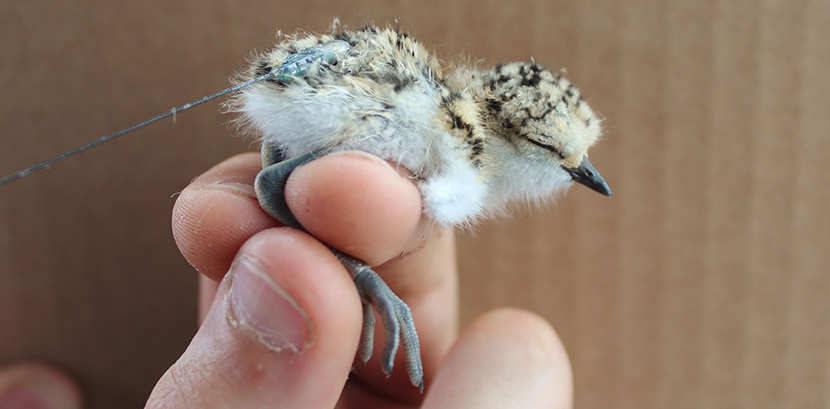The idea of daddy’s girls and mummy’s boys might just translate to the animal kingdom, according to new research.
Researchers from Deakin University’s Centre for Integrative Ecology (CIE) have found that amongst a species of Australian shorebird fathers spend more time caring for their daughters, while mother plovers are more attentive to their sons.
The finding from the study of 42 broods of red-capped plovers is believed to be the first conclusive evidence of this kind of breeding behaviour in any species worldwide.
“This is absolutely unique in terms of what we know about parental care in birds,” said lead researcher Daniel Lees, a PhD candidate with CIE.
“It’s the first evidence where both male and female parents increase their provision of care for young of the opposite sex.”

Baby plovers are treated differently by their parents depending on their gender
Mr Lees said red-capped plovers were found all over Australia, usually on ocean beaches, salt pans, saltmarshes, estuaries and some wetlands. During a breeding attempt they typically lay two eggs in a shallow scrape.
As part of the study in Victoria’s Point Cook Coastal Park, researchers attached radio trackers to red-capped plovers when the chicks hatched.
They then used the equipment to observe the plovers every day until one chick in the brood had fledged, which typically takes about 35 days.
“Red-capped plovers divide the tasks of raising their chicks between both parents,” Mr Lees said.
“When the eggs are laid the mother incubates them during the day, due to her more camouflaged colouring, and the father at night.
[testimonial_text]Then, when the chicks hatch, they must feed themselves, but one of the parents is always there to help keep them warm, to warn of danger and to lead them to places with food.[/testimonial_text]
[testimonial_picture name=”Mr Daniel Lees” details=”PhD Candidate Centre for Integrative Ecology”]
 [/testimonial_picture]
[/testimonial_picture]During the first few weeks after hatching, the chicks are very vulnerable to predators and it is mainly the mother who accompanies them, as she is better camouflaged than the father with his brightly coloured “red-cap”.
As the chicks become better able to escape from danger, the father gradually takes over their care until they are independent.
“But what we noticed in our study is that there’s some inequality in the division of care between parents, depending on whether they have daughters or sons,” Mr Lees said.
“The mother will decrease her contribution over time at a lower rate when the majority of her young are males. In that case, she continues to invest more time than she would do if she had daughters. The father, who gradually takes over her job, will provide more care if the young are female.”
Importantly, there is no visible difference between male and female red-capped plover chicks. In fact, the researchers needed a blood sample to be able to determine the sex of the young.
Mr Lees said it was hard to think what evolutionary reason there might be for this preference.
“The only things we could think of to explain it was that a bird of the opposite sex will not compete with them for mates in a subsequent breeding season,” he said.
“Evidently at least some plovers enter the breeding pool at a year old, so it could be that their parents perceive them as future threats.
“The other reason could be that the animal’s in-built attraction to the opposite sex might manifest itself in some way when it comes to how the birds see their young in some sort of oedipal complex.”
Mr Lees said shorebirds like plovers were good species to research breeding patterns because they always stayed within Australia and it was easy to find many of their nests in a small geographic area.
The results of the study were recently published as, “Plover parents care more for young of the opposite sex” in the journal “Behavioural Ecology”.
The research was completed with the support of Phillip Island Nature Park, BirdLife Australia, Parks Victoria and the Holsworth Wildlife Research Endowment.
Published by Deakin Research on 7 May 2018



